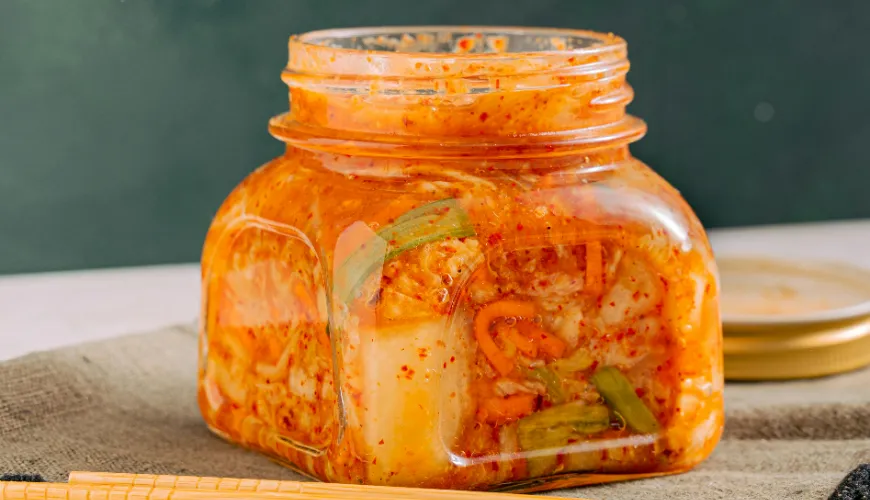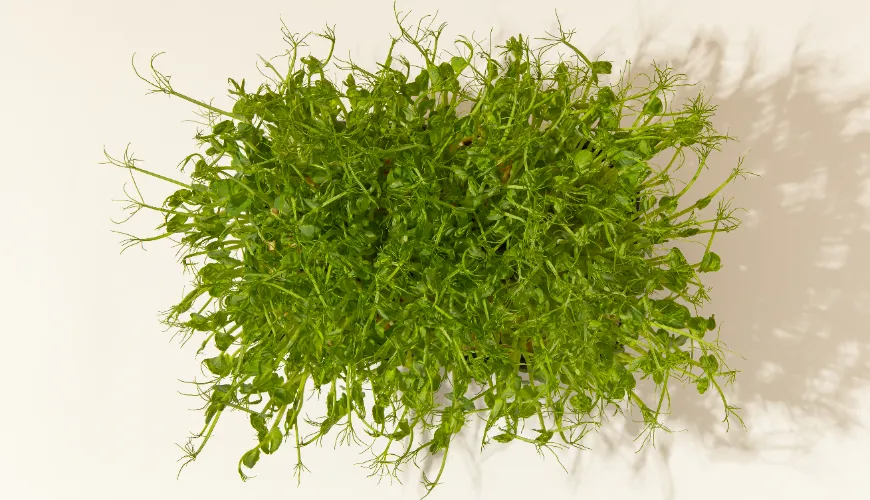
Fermented vegetables are a miracle full of probiotics and vitamins.

Fermented vegetables, sometimes referred to in English as pickles, are becoming an increasingly popular choice for healthy eating. This traditional method of preserving vegetables has not only a long history but also many health benefits that contemporary science is beginning to discover and confirm. Fermentation, the process by which sugars in vegetables are converted into lactic acid by natural bacteria, is not only simple but also exceptionally effective and healthy.
What are fermented vegetables?
Fermented vegetables are the result of a natural fermentation process, during which microorganisms, primarily lactobacilli, convert carbohydrates in vegetables into lactic acid. This process not only preserves the vegetables but also creates an environment rich in natural probiotics, which are beneficial bacteria that support gut health. Some of the most well-known types of fermented vegetables include sauerkraut, kimchi, fermented cucumbers, and many other varieties.
Health benefits of fermented vegetables
Consuming fermented vegetables offers many health advantages, making it certainly worthwhile to include them in your daily diet. How can the consumption of fermented vegetables specifically affect health?
The probiotics found in fermented vegetables help maintain a healthy gut microbiome, which is crucial for proper digestion and nutrient absorption. A healthy gut microbiome also contributes to the prevention of constipation and other digestive issues. A healthy gut microbiome plays an important role in our immune system. Probiotics in fermented vegetables can help enhance the immune responses of the body and protect us from infections and diseases.
Fermented vegetables are rich in vitamins, minerals, and enzymes that are important for human health. The fermentation process increases the bioavailability of these nutrients, meaning our body can absorb them better. Fermentation can help reduce the amount of toxins in foods while also supporting detoxification processes in the body.
Some studies suggest that probiotics may have a positive impact on mental health. Improving the gut microbiome may contribute to reducing anxiety and depressive symptoms. Regular consumption of fermented vegetables can significantly support healthy weight regulation. Probiotics can influence how the body stores fat and how it utilizes energy from food.
How to ferment different types of vegetables
Fermenting vegetables is a process that you can easily master at home. Different types of vegetables require different approaches, but the basic principles of fermentation remain the same.
Sauerkraut
Sauerkraut is perhaps the most well-known and popular form of fermented vegetables in our region. To prepare it, you only need cabbage, salt, and a bit of patience. Shred the cabbage into thin strips, mix it with salt, and let it sit until it starts to release juice. Then tightly pack the cabbage into a container so that it is completely submerged in its own juice, and let it ferment at room temperature for several days to weeks. Sauerkraut is excellent as a side dish for various meals or as a standalone salad.
Kimchi
Kimchi is a traditional Korean dish made from fermented vegetables, most commonly napa cabbage, radishes, garlic, ginger, and chili peppers. The process is similar to that of sauerkraut, but various spices and ingredients are added to give kimchi its characteristic spicy flavor. Fermentation also occurs at room temperature and usually takes several weeks. Kimchi is a great source of vitamins A, B, and C and is also known for its strong antioxidant properties.
Fermented cucumbers
Fermented cucumbers are another popular form of fermented vegetables. To prepare them, you will need small cucumbers, salt, water, and optionally spices like dill, garlic, or pepper. Place the cucumbers in a container, cover them with brine, and let them ferment at room temperature for several days to weeks. Fermented cucumbers are excellent as a snack or side dish for various meals.
Other types of fermented vegetables
In addition to cabbage and cucumbers, you can also ferment other types of vegetables, such as carrots, cauliflower, beets, or peppers. The process is again very similar - chop the vegetables, mix with salt, pack into a container, and let them ferment. Each type of vegetable may require slightly different fermentation times, but the result will always be tasty and healthy fermented vegetables. Don't hesitate to experiment, and remember that practice makes perfect.
Beets are rich in vitamins and minerals, making them an ideal ingredient for fermentation. Peel and slice the beets into thin rounds or cubes, add salt, and mix. Then pack the beets into a container and cover with water so that they are completely submerged. Fermented beets have a sweet and sour taste and are great in salads or as a side dish.
Fermented carrots are a tasty and refreshing option. Slice the carrots into thin rounds or sticks, mix with salt, and optionally add herbs like thyme or dill. Pack the carrots into a container and cover with water. Let them ferment for several days to weeks. Fermented carrots are great as a healthy snack or addition to salads.
Cauliflower can be fermented either alone or in combination with other vegetables. Break the cauliflower into small florets, add salt, and optionally spices like turmeric or curry. Pack the cauliflower into a container and cover with water. Let it ferment at room temperature for several days to weeks. Fermented cauliflower is excellent as a side dish for meat or as part of vegetable mixes.
A few tips for successful vegetable fermentation
To ensure that your fermented vegetables are as tasty and healthy as possible, it's good to follow a few basic rules.
Fresh and quality vegetables are the foundation of successful fermentation. Avoid using chemically treated, poor-quality, or overripe vegetables. When preparing fermented vegetables, it's important to pay attention to the cleanliness of the containers and tools you use. This minimizes the risk of contamination with harmful bacteria.
Always pack the vegetables tightly into the container so that they are completely submerged in their own juice or brine. This ensures an anaerobic environment that is key to successful fermentation. Monitor the temperature at regular intervals. The ideal temperature for fermentation is between 18 and 22 °C. Too high or too low temperatures can slow down or even stop the fermentation process.
Be patient. Fermentation is a natural process that takes time. Don't be afraid to experiment with different types of vegetables and fermentation lengths to find the flavor that suits you best.
Watch out for mold. If mold appears on the surface of the fermented vegetables, it may indicate that air has entered the container. Always ensure that the vegetables are well submerged and the container is tightly sealed.
And one very pleasant tip for the end: taste regularly. You can start tasting fermented vegetables after just a few days. This will give you an idea of how their flavor changes, and you can decide when is the ideal time to consume them.
Fermentation is a simple step toward better health
Fermented vegetables are not only tasty and refreshing but also immensely beneficial for human health. With a simple fermentation process, you can easily prepare various kinds of vegetables full of probiotics and other beneficial substances. Whether you choose sauerkraut, kimchi, or fermented cucumbers, incorporating this traditional superfood into your diet will bring you a range of health benefits. Experiment, discover new flavors, and enjoy all the benefits that fermented vegetables have to offer.
Incorporating fermented vegetables into your diet can be one of the best steps you can take for your health. This natural method of preserving and enriching foods with probiotics is not only effective but also fun and creative. Start today and discover all the advantages that fermented vegetables can offer you.

